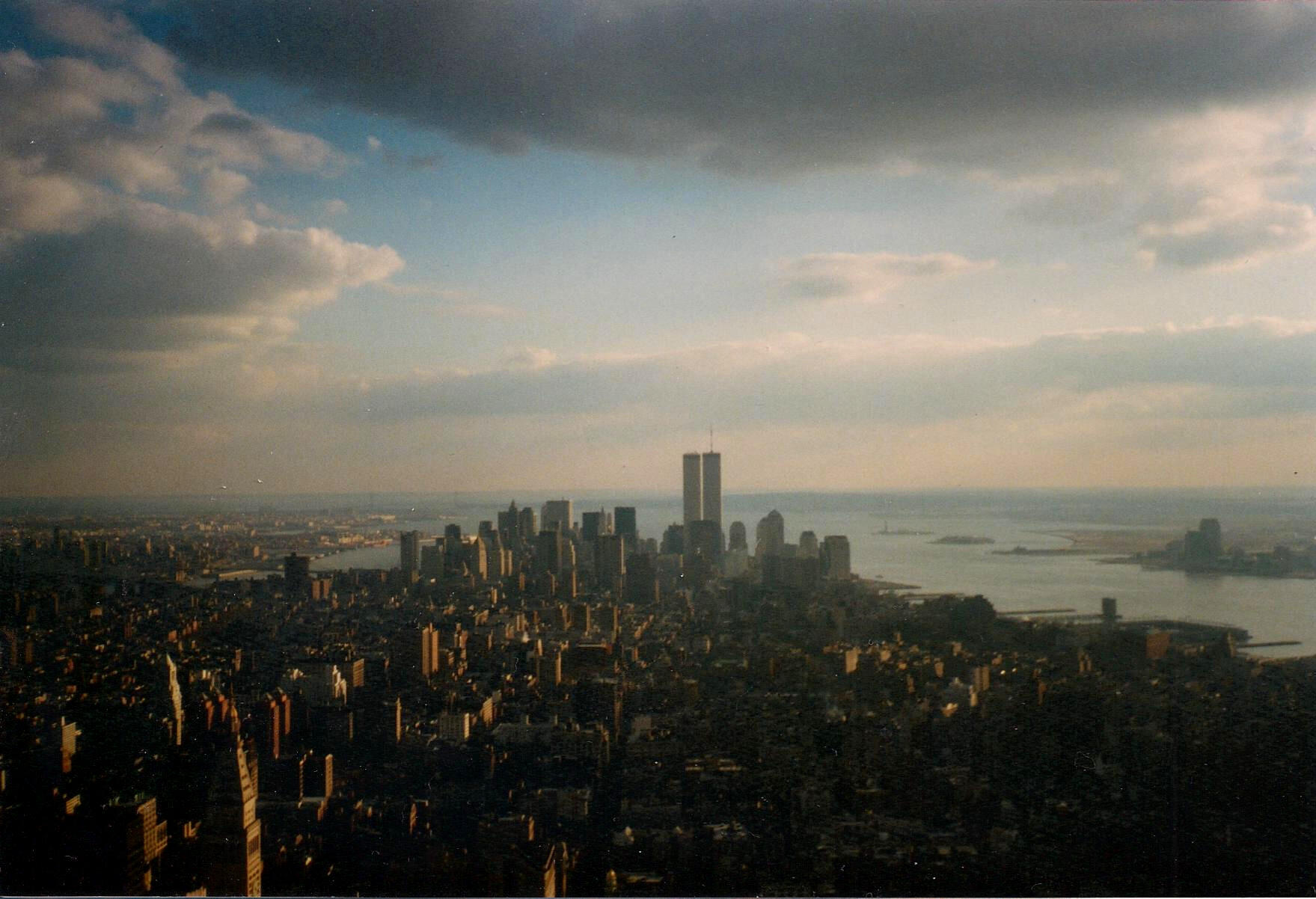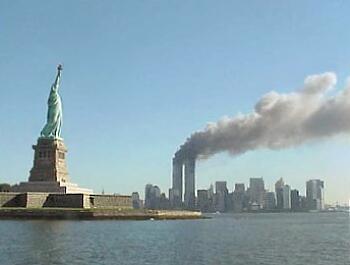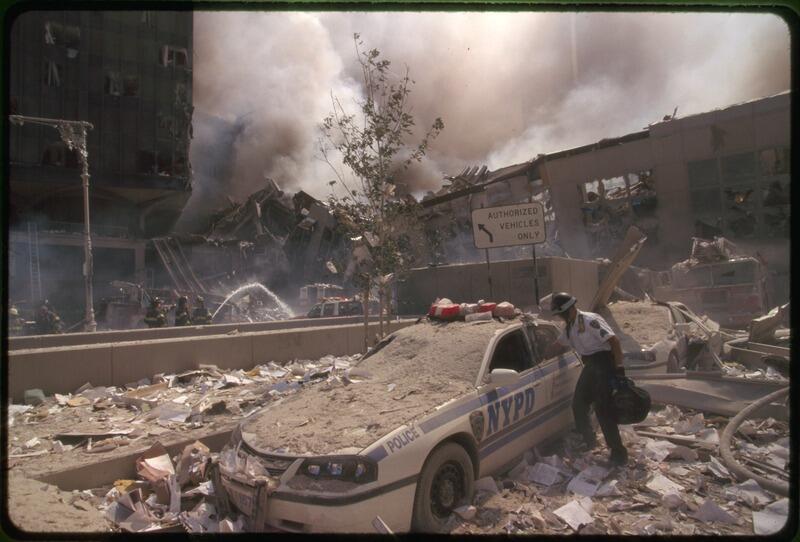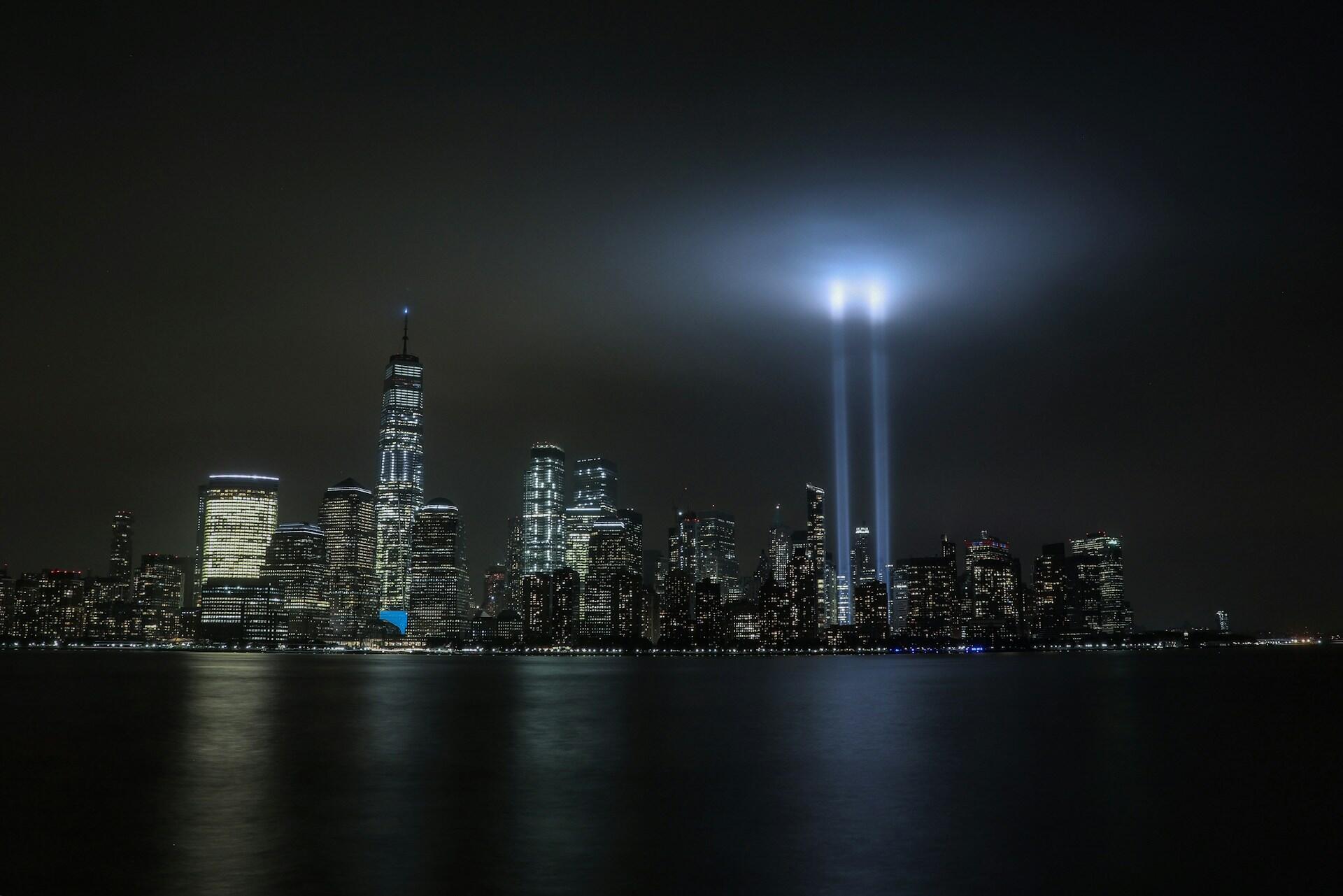Depending on your age, you will have different memories, background knowledge, experience, and questions about the infamous day known as 9/11. The major event of the day revolves around the office buildings in New York City known as the Twin Towers and the crisis that ensued when two airplanes flew into them. Read on to find out more about how 9/11 came about, the events of the day, and the aftermath.

What Was September 11th?
The morning of Sept 11, 2001 started out like any other day for the common people of the United States. However, that quickly changed when, just before 9 AM, the first plane hit the first tower.
In real-time, the people working in the WTC, the people of NYC, and the rest of the US and the world were finding out what was happening minute by minute as news reports dominated as many television channels as they could, with everyone glued to the screen.
Most of the people in both buildings survived after the planes crashed into them. The planes hit the top floors of the buildings, so almost everyone on the lower floors could easily escape, which was thousands of people. However, most of the people on the affected floors and above were unable to escape. Tragically, every passenger in all the planes was killed on impact.
Most people initially thought there had been a terrible aviation accident- until the second plane hit the second tower less than 20 minutes later, at 9:03 AM. It was then that everyone realized it was intentional. It was a terrorist attack, the first attack on American soil since Pearl Harbor in December 1941.
Chaos ensued the minute of the first attack: workers in the buildings scrambled to gather their wits and evacuate; injured and trapped employees struggled to find a way out; people on the ground panicked, some frozen in fear while others ran and drove away as fast at they could; and emergency services rapidly tried to assess the situation and do whatever they could to save people.
About the Hijacked Planes
At this time, airport security was much more relaxed than it is today (which is a result of 9/11). The hijackers were able to board their flights with concealed weapons like knives and box cutters that they used to subdue flight crews and passengers and take control of the flights.
In all, four planes were hijacked that morning, all around the same time.
Two of these planes, American Airlines Flight 11 and United Airlines Flight 175, were flown into the North and South Towers of the World Trade Center in New York City.
Another plane, American Airlines Flight 77, struck the Pentagon in Arlington, Virginia.
The fourth plane, United Airlines Flight 93, crashed in a field near Shanksville, Pennsylvania, after passengers heroically fought to regain control. It’s believed that this plane was on its way to crash into the White House or the Capitol.

The Twin Towers After Impact
About an hour after the first plane hit the North Tower, the South Tower collapsed (despite being hit second, it had sustained more damage). The immediate result was threefold: Hope was lost for all the people remaining in the buildings, the surrounding areas were coated by dust and debris billowing outward, and the people caught in the cloud (pedestrians and emergency personnel) suffered from immediate and long-term health problems from inhaling the dust.

Over the next few days, emergency services from all over the country were sent to assist in search and rescue. In total, nearly 3,000 people lost their lives, including passengers, first responders, and individuals in the affected buildings. All of the terrorists died in the attacks.
The fires in the rubble burned for more than three months.
The entire country felt uneasy and scared, unsure of if there were going to be more attacks. A national sense of grief, despair, anger, and fear took hold.
Another event in US history that changed society was the Civil Rights Movement.
What Were the Motivations for 9/11?
At the time, many people in the US didn’t understand why anyone would be attacking the country. Only those who were in politics or who were particularly politically informed may have had an idea of what was going on. In the aftermath, the reasons for the attacks began to become more clear.
The US’s Relations with the Middle East
The September 11 attacks were orchestrated by Osama bin Laden, the leader of al-Qaeda, an Islamist extremist group headquartered in Afghanistan. Al-Qaeda’s stated motivations stemmed from a long list of grievances against U.S. foreign policy in the Middle East, including:
- The presence of U.S. troops in Saudi Arabia: Bin Laden viewed this as a desecration of Islamic holy lands.
- U.S. support of anti-Muslim countries: The U.S. supported many countries that had anti-Muslim sentiments and actions.
- Sanctions against Iraq: The economic hardships imposed on Iraq in the 1990s contributed to al-Qaeda’s narrative of Western oppression.
Al-Qaeda aimed to demoralize the US (and the Western world in general), instilling fear and demonstrating power. They didn’t have the resources to fight a war, so they had to achieve their goal through terror attacks that caused physical and emotional damage.


9/11 Timeline of Events
The day of Sept 11th was absolute chaos. There were also many important events leading up to the day and in the days, weeks, months, and years that followed. Here are the main events surrounding the day.
Leading Up to the Day
Years before the day of the attacks, al-Qaeda prepared plans to attack the United States. Leaders and operatives around the world prepared by covering their tracks, using secure channels and coded messages, and generally conducting highly sensitive and illegal activities without detection.
A few months before the day, the hijacking operatives covertly prepared, traveling to the US, taking commercial flying lessons, and studying airport security.
The Day of the Attacks
7:59 AM
American Airlines Flight 11
AA Flight 11 takes off from Boston Airport. There are 5 hijackers aboard.
8:15 AM
United Airlines Flight 175
UA Flight 175 takes off also from Boston. There are also 5 hijackers aboard.
8:19 AM
Alert from AA Flight 11
A flight attendant on AA Flight 11 alerts ground personnel that the plane is being hijacked.
8:20 AM
American Airlines Flight 77
AA Flight 77 takes off from just outside Washington, DC. There are 5 hijackers aboard.
8:42 AM
United Airlines Flight 93
U Flight 93 takes off from Newark Airport. There are 4 hijackers aboard.
8:46 AM
The First Tower is Hit
Flight 11 crashes into the North Tower of the World Trade Center.
9:03 AM
The Second Tower is Hit
Flight 175 strikes the South Tower.
9:05 AM
The President is Notified
President George W. Bush is informed about the attack as he reads a book to a classroom of second-grade students.
9:37 AM
The Pentagon is Hit
Flight 77 hits the Pentagon.
9:45 AM
Operation Yellow Ribbon
All civilian aircraft in US airspace are ordered to land at the nearest airport. Commercial aircraft are also grounded later on.
9:59 AM
The South Tower Collapses
It had been burning for approximately 56 minutes.
10:03 AM
Flight 93 Crashes Down in Pennsylvania
The crew and passengers fought back against the hijackers and foiled the plan.
10:18 AM
The US Military prepares to attack any airplanes still in the sky
President Bush authorizes shooting down any non-grounded planes (the government knew there was a 4th hijacked plane, but they didn’t know it had crashed in Pennsylvania).
10:28 AM
The North Tower Collapses
10:53 AM
DEFCON 3
The Secretary of Defense orders the US military to DEFCON 3 alert
2:30 PM
NYC Mayor Visits Ground Zero
Mayor of NYC Rudy Giuliani visits the site of the fallen towers (Ground Zero)
8:30 PM
Presidential Address
President Bush gives an address to the nation
Immediate Aftermath
First responders, including firefighters, police officers, and paramedics, rushed to the scenes, many sacrificing their lives in rescue efforts. In total, over 400 first responders perished. Airports across the U.S. were closed, and all flights were grounded for the first time in history. The nation was in a state of shock and mourning as the news unfolded.

Rebuilding: How American Society Responded to 9/11
9/11 irrevocably changed American society. America responded to the terrorist attacks in a myriad of ways politically and socially. In the wake of the tragedy, the United States embarked on a path of recovery and resilience.
Here are key aspects of the response:
Memorialization
Built in 2006, the 9/11 Memorial and Museum now stands at the site of the former World Trade Center (Ground Zero) in New York City, honoring the lives lost and ensuring the world remembers the significance of that day.

The One World Trade Center (One WTC, but often called the "Freedom Tower"), completed in 2014, was built to symbolize rising from the ashes and standing tall again in defiance of the terrorists. It is currently the tallest building in the US.
Policy and Security Changes
The U.S. government enacted sweeping changes to national security policies. Some of the policies have been heavily criticized since their implementation. The biggest changes made were:
- Creation of the Department of Homeland Security (DHS): Established in 2002 to coordinate domestic safety measures.
- The USA PATRIOT Act: Enacted to expand surveillance capabilities and counterterrorism efforts.
- Transportation Security Administration (TSA): 2 months after the attacks, the TSA was founded to enforce Federal-level, stricter screening procedures at airports.
- Air Force and Navy Activity: In the months after the terrorist attacks, heightened use of the Air Force and Navy ensured that the air and sea surrounding the US were kept safe from subsequent attacks.
Military and Global Actions
The U.S. launched the War on Terror, beginning with military operations in Afghanistan to dismantle al-Qaeda and overthrow the Taliban regime that provided them sanctuary. This global effort against terrorism involved numerous allies and led to decades-long military engagements. The fighting also expanded into Iraq. The war was declared over in 2021.
Public Unity and Support
In the aftermath, Americans came together in unprecedented ways. At first, the nation was left grieving, but soon, there was a sense of national solidarity and unity.
More than ever before, people all over the country were performing acts of kindness, volunteering, and making charitable contributions. Vigils, fundraisers, and community events helped bring people together and ease the pain and fear. For a short yet profound time in modern US history, people from all walks and of all beliefs put aside their differences and supported one another with a new passion.
The unfortunate exception to this beautiful togetherness was an increase in anti-Islamic sentiment and incidents of racism.
It was a time of complicated grief, anguish, harmony, and resilience for most Americans that many look back on with a fondness for the feeling of unity. Such a feeling hadn't really been present since the moon landing in 1969. The fallout boosted many Americans' patriotism and national pride. At any rate, the events of that day continue to impact the American psyche in terms of politics and policies, individual beliefs, and cultural behavior.
References
- 9/11 FAQs. (n.d.). In National September 11 Memorial & Museum. https://www.911memorial.org/911-faqs
- Al Qaeda - Background - Al Qaeda. (n.d.). In PBS. https://www.pbs.org/wgbh/pages/frontline/shows/network/alqaeda/indictment.html
- Hannah Hartig and Carroll Doherty. (2021). Two Decades Later, the Enduring Legacy of 9/11. In Pew Research Center. https://www.pewresearch.org/politics/2021/09/02/two-decades-later-the-enduring-legacy-of-9-11
- September 11 attacks. (2025). In Britannica. https://www.britannica.com/event/September-11-attacks
- Timeline: The September 11 terrorist attacks. (2020). In Miller Center. https://millercenter.org/remembering-september-11/september-11-terrorist-attacks















